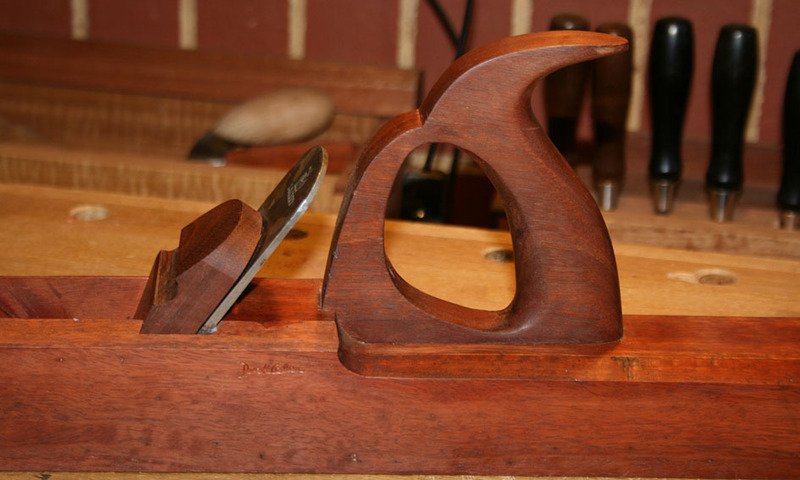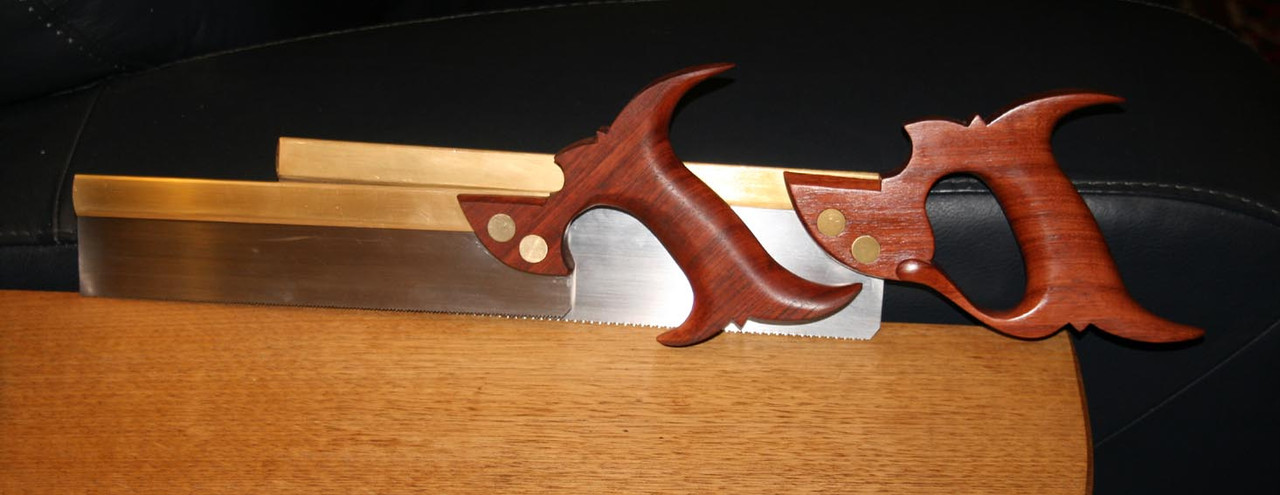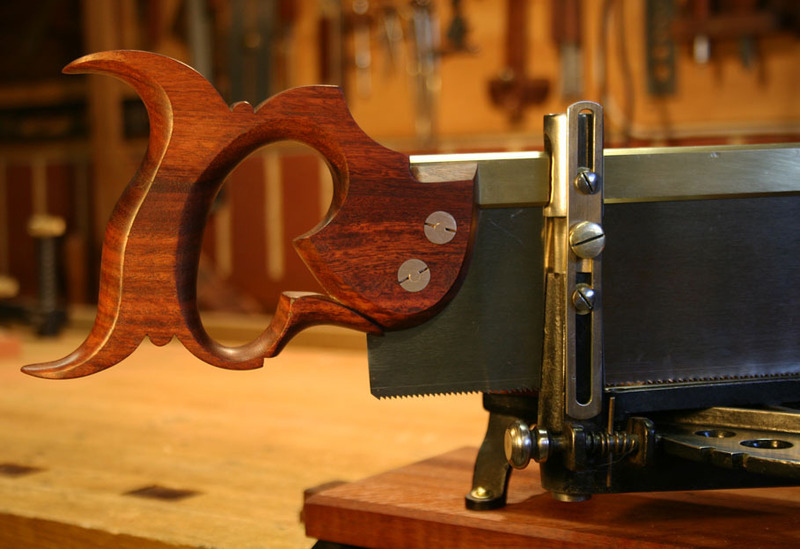
Originally Posted by
Derek Cohen

[edited]
Bob mentions that the dovetail saw is balanced by the lower edge of the palm (and the lower horns of the handle). I have written about this in the past, and designed saw handles to maximise this factor. It would be an interesting area of ergonomic research to investigate.
When I was looking at the ergonomics of planing, and raised the importance of pushing forward rather than downward (creating a low centre of effort), it occurred to me that many of the old woodies had handles that encouraged one to grip them lower and push from low down (See article
here). This led to designing plane and saw handles with the same featured emphasis at the lower section of the handle ...
With more traditional saw handles, I grip them low and let them rest lightly on the lower horns. You can balance the saw this way without holding it tightly.
Regards from Perth
Derek
My grandson was instructed a bit on this technique of starting a saw while he was here last month.
The lower push on the handle of a hand plane can also be of use when checking the sole of a plane. The thickness of shaving should not change significantly from a straight push to a push with downward pressure above the mouth.
jtk
"A pessimist sees the difficulty in every opportunity; an optimist sees the opportunity in every difficulty."
- Sir Winston Churchill (1874-1965)
), you turn the saw on, wait for it to come up to speed, then feed the wood through.




 Reply With Quote
Reply With Quote







